Once again it’s time for the culminating project for the fourth grade unit about Native American Indians living in and near Indiana. Looking now at the pictures, it’s clear that Mason and Olan had a vision for how their wigwam would look. They employed creativity, craft and recycled materials and lots of glue. That house structure is a plastic grape tomato container wrapped in bark with a pipe cleaner roof. The bridge is made of cervical scrapers left over from the colonial project that Walker made in fifth grade. The groundcover is moss purchased for one project or another than seems to propagate on its own as it’s made an appearance in more projects than I can recall. The only manufactured parts were the figures which were an easy find at the craft store.
I volunteered to help over the course of three days at school but really I just was another adult presence. My job was really only to offer input when it was solicited. As a result, this project was 100% kid driven and executed. While the wigwam may have been the culmination in their social studies lesson, it might have been me who walked away with the greatest gem for I was reminded that children can utilize their imaginations to build amazing places.
Walker’s Native American longhouse can be revisited here.
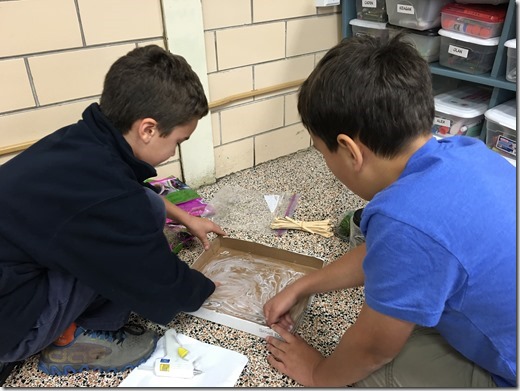
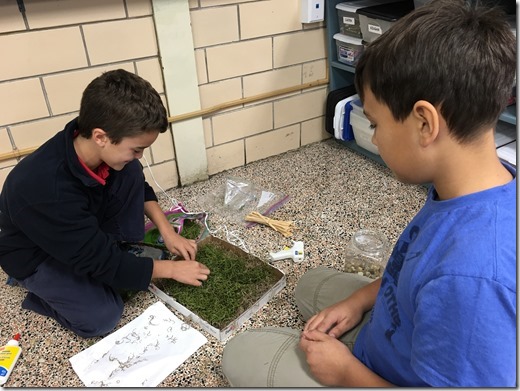
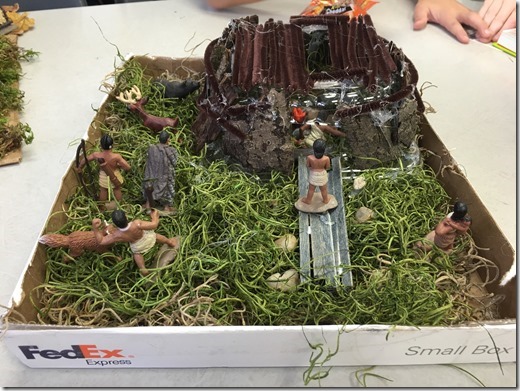
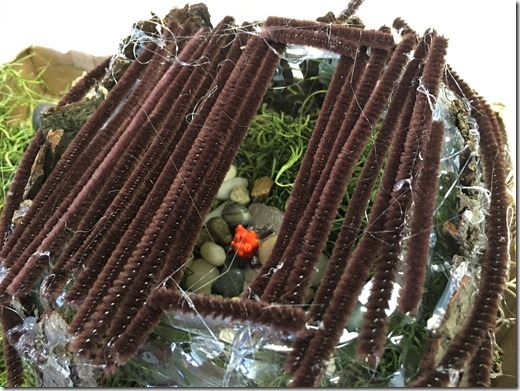
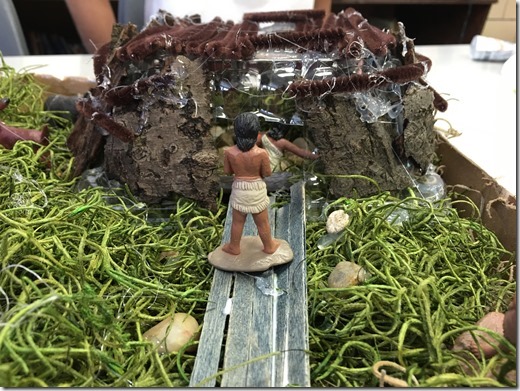
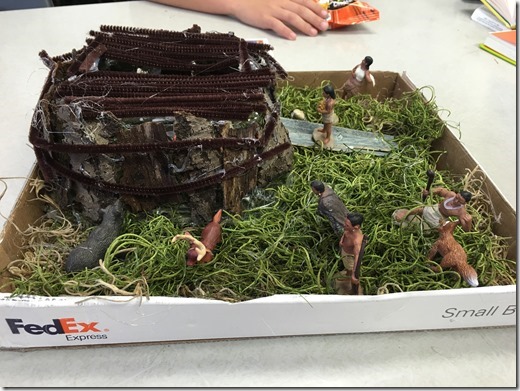
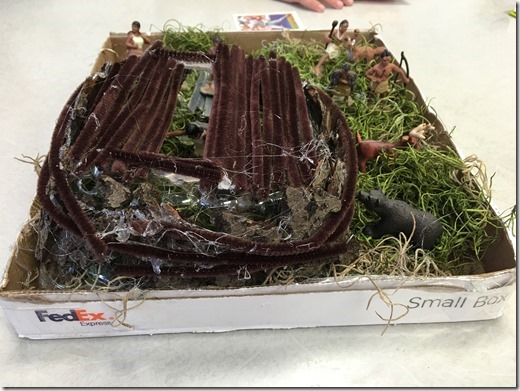
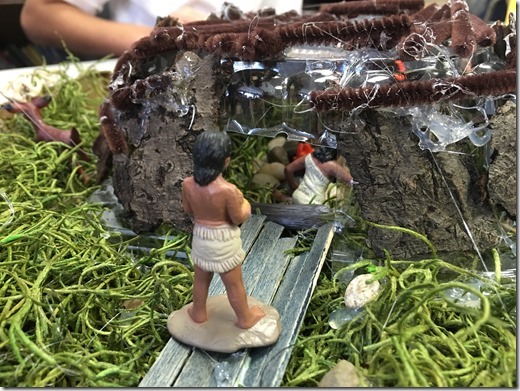
A great lesson! You learned it sooner than I did.